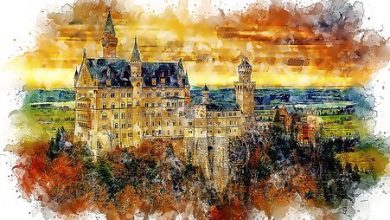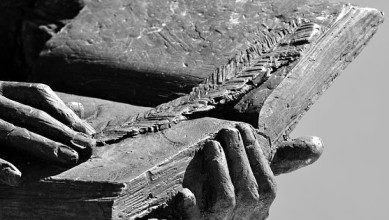Graham Greene’s short story The Destructors first appeared in two parts in Picture Post in 1954. That same year, it was included in the collection Twenty-one Stories. Interestingly, in the preface to his Collected Stories, Greene claimed, “I have never written anything better than ‘The Destructors’.”
The Destructors SUMMARY
The short story follows the activities of the Wormsley Common Gang. The readers meet Mike first, a nine-year-old member of the gang. Then Trevor, generally called T. by the gang members, is introduced. It is clear that Trevor comes from a well-off family with some social capital. His father was an architect and is now a clerk. His name is an unusual one for a gang member and he is comfortable with it: he announces his name as ‘a statement of fact, not as it would have been with the others a statement of shame or defiance.
Mr. Thomas, called Old Misery by the gang, is then introduced. It is clear that he is altogether a kind and gullible man. But his kindness does not go down well with the gang members. T. has managed to go visit Old Misery’s house, and he proposes that they go destroy his house thoroughly when he is out for the next two days thanks to the August Bank Holiday. Old Misery’s house is literally an example of a miracle since it somewhat escaped the Blitz while all the others surrounding it were damaged.
This daring proposal stirs up some unrest in the group and T. replaces Blackie as the leader of the gang now. Immediately after taking charge, T. authoritatively begins to lay out the blueprint of their work ahead, assigning duties to each member.
The next day, the destruction of Old Misery’s house begins. Like eager craftsmen, the members cause a planned and thorough mayhem inside the house, taking it apart and taking it down bit by bit, under T.’s able leadership. Even the young Mike does a commendable job at cutting all the wires in the house. Just as the group is done for the night, T. leads Blackie to where Old Misery keeps his savings. T. does not want to steal the money. He simply burns it. Blackie asks if T. really hates Old Misery all that much. To this, T. replies,
“Of course I don’t hate him,” T. said.
“There’d be no fun if I hated him.”
The work of destruction continues the next day. However, Old Misery comes back earlier than expected. The gang members want to stop their onslaught then and there since they think enough has been done already. However, T. wants to finish what has been started. His leadership undergoes a crisis but Blackie quickly recovers the situation. As Old Misery reaches the house, he is trapped in the outhouse in the garden outside the house. The gang makes sure that he is provided with a blanket and food for the night since this is ‘not personal’.
The next morning, a lorry driver starts moving his vehicle when the entire house falls apart. Then the driver sees there is a rope that was attached to the lorry, its other end being tied to the struts that supported the house. He frees Mr. Thomas from the loo. The latter is naturally devastated seeing his house gone. The lorry driver, however, cannot stop laughing.
The Destructors ANALYSIS
THEMES
Changing class dynamics in a changing world is the prominent theme of the story. This story was written some years after the Second World War England could still well remember the traumatic memories inflicted by the notorious Blitz when the common people actually had to perpetually live with the fear of losing their lives or properties to bombs. The mostly adolescent demographic talked about in the story may not have seen the horrific scenes of war firsthand but they surely have inherited a world that is still trying to come to terms with the same. The Europe of the late 40s and early 50s is a Europe of utter chaos. Previously in England, the class structure was fervently rigid. The two successive World Wars infused a general sense of disillusionment and frustration among the common populace and they demanded a thorough reordering of the system after them. This demand was reflected in the election in England immediately after the Second World War. People in general were fed up with the nobility and their highhanded attitudes. A sense of conflict based on class was long present in England with its rigid social structures. The wars just ushered it out of the closet.
The class tension in the story is palpable right from the first page. The name ‘Trevor’ itself is a class marker and the others do not fail to read this connotation of the name. The third-person narrator tells us, “[T]here was his name (and they substituted the initial because otherwise, they had no excuse not to laugh at it), the fact that his father, a former architect, and present clerk, had “come down in the world” and that his mother considered herself better than the neighbors.” Hence Trevor, with his obvious class privileges, must take on the name of T. in order to fit in.
This attempt at fitting in is significant because times are changing in England and in Europe in general when the events in this story unfold. The members of the Wormsley Common Gang, just like most of the other people, are wary of the old order and most importantly, the people who they think stand for it. Children of unruly and fearful times, they are driven by a tremendous spite towards the upper class, and aristocratic concepts that have hitherto stifled English life. This is symbolized powerfully through one effective touch from Greene: let us see Blackie’s reaction when T. uses the word ‘beautiful’:
‘It was the word “beautiful” that worried him—that belonged to a class world that you could still see parodied at the Wormsley Common Empire by a man wearing a top hat and a monocle, with a haw-haw accent. He was tempted to say, “My dear Trevor, old chap,” and unleash his hell hounds.’
The aesthetic notion of ‘beauty’ is heartily despised by the generation that was born in a world maimed by bombs and general mayhem. Trevor uses the word and it worries Blackie, who momentarily wonders if Trevor is yet to realize the hollowness and futility of upper-class attitude and jargon.
It is inevitable that during these changing times, someone like Mr. Thomas must be labeled ‘Old Misery’ (the epithet ‘old’ is highly suggestive of the discourses presented here, of course), and that he must be at the receiving end of the gang’s attempt at a miniature re-ordering of things. And it is, in a way, natural given the trajectory the times were following. Let us take but one example. When Mr. Thomas, out of sincere kindness, no doubt, offers some of the gang members some chocolates when he happens to meet them, he offers the same thus: ‘I got some chocolates,’ Mr. Thomas said. ‘Don’t like ’em myself. Here you are. Not enough to go around, I don’t suppose. There never is’ (italics added). Of course, the children do not see this as kindness. They naturally read this gesture such that it makes Mr. Thomas appear as a patronizing man with privileges who gives out things to people when he does not like them himself. Thus, the children are the product of the changing times while ‘Old Misery’ is precariously stuck in an old order in these changing times. The inevitable class tension between them forms the principal theme of the story.
Destruction, of course, is another prominent theme of the story. But destruction in the story is also another name for creation. The narrator tells us, ‘Streaks of light came in through the closed shutters where they worked with the seriousness of creators—and destruction after all is a form of creation. A kind of imagination had seen this house as it had now become.’ Destruction in the story stands for the gang’s attempt at reorganizing society based on what their worldview. The house itself stands for the old order of things. It must come down.
The primary agent of this destruction is Trevor. This is not ironic but poetically just. He does not act out of some vague sense of class guilt at having been born into a higher society than his present peers. Rather, his attempt at this reorganization is thorough and dispassionate. The whole of the work must be done, he insists, when the others want to flee upon Mr. Thomas’s early arrival:
‘Anybody could do this—” “This” was the shattered hollowed house with nothing left but the walls. Yet walls could be preserved. Façades were valuable. They could build inside again more beautifully than before. This could again be a home. He said angrily, “We’ve got to finish. Don’t move. Let me think.’
This is a revolution for Trevor, and it has to be him as the leader of this since he of all people knows what it means to be born with privileges at a time when others are struggling to stay alive in the race for survival.
Another theme that comes up often in the story is how dispassionate Trevor is towards Mr. Thomas. He tells Blackie this:
‘Of course, I don’t hate him … There’d be no fun if I hated him … All this hate and love … it’s soft, it’s hooey. There’s only things, Blackie…’.
Trevor’s action is directed towards the very foundation that created the ruptured world he and his peers inherited, and his action is not driven by personal malice towards the people benefiting from that foundation per se. He knows, that in a world where things (symbolizing the older order again) have become all-important, the best way to bring about a change is to start with harming the things. Yes, Mr. Thomas will lose his home due to Trevor’s spirited endeavor but the house with its awesome furnishings and architecture must go because they stand for an earlier, despised period.
Indeed, the English populace’s attempts at reorganizing their society are also reflected in the story. The gang functions on a democratic and meritocratic basis, not on an aristocratic basis. On the other hand, Mr. Thomas rigidly holds on to former ideals in a changed period. For example, he chides Trevor when he finds out that they use his outhouse often by illegally trespassing on his property. He brings up the question of ‘rights’. The gang, however, belongs to the generation that would go the extra distance to snatch what they think is theirs, as if the rich alone can afford to hold on to ‘rights’ at a time when everything has been toppled.
The theme of innocence is also subtly woven into the narrative. Mike is the youngest member of the gang and his characterisation is often playful. Yet this very young child also partakes in the destruction. This raises the question of whether innocence is too pricey a luxury in times rife with violence, tension, and all-round decay.
NARRATIVE STYLE AND TECHNIQUES
The story is narrated by a third-person limited omniscient narrator. The narrator often narrates parts of the tale through specific characters’ perspectives, not revealing the entire picture and hence, building up suspense. This is how Old Misery’s early arrival works as an effective shock. So does the part when the house finally comes down in the morning through the lorry driver’s unwitting participation.
Greene’s powerfully symbolic narrative technique ensures that the themes of the story come across subtly yet clearly. Consider this passage:
“Summers with hammer and chisel was ripping out the skirting boards in the ground floor dining room: He had already smashed the panels of the door. In the same room, Joe was heaving up the parquet blocks, exposing the softwood floorboards over the cellar. Coils of wire came out of the damaged skirting and Mike sat happily on the floor, clipping the wires.”
The objective style of the narration is the very cause why this passage is so evocative.
Also, Greene’s depiction of Old Misery, though ideologically evocative, is quite sympathetic, especially towards the end when we see the old man’s agony over his loss. Greene here perhaps raises the moral dilemmas associated with revolutions.
LITERARY DEVICES
That the story can be read as an allegory is already clear. To take one last example, the lorry driver at the end laughs at Mr. Thomas’s loss, despite himself, since one moment ‘the house had stood there with such dignity between the bomb sites like a man in a top hat, and then, bang, crash, there wasn’t anything left—not anything.’ The lorry driver, himself a member of the lower class, enjoys the twist of events here. Also, the building up of the house itself as the sole survivor of the Blitz is a superb allegorical touch.
Situational irony is used in the following instance:
“Old Misery came limping off the common. He had mud on his shoes and he stopped to scrape them on the pavement’s edge. He didn’t want to soil his house, which stood jagged and dark between the bomb sites, saved so narrowly, as he believed, from destruction. Even the fanlight had been left unbroken by the bomb’s blast.”
The reader knows the house that Old Misery is trying to keep clean of his mud is fast moving towards destruction on the inside.
THE TITLE OF THE STORY
‘The Destructors’ of the story are potential creators too. The story raises the question of whether there is any bad connotation to destruction when it is the sole agent of recreation. But at the same time, the reader must note that the gang, especially Trevor, subconsciously thinks it is the sole agent of recreation. Whether it truly is, is an ideological question– a question this text points towards. The title is foreboding but variously suggestive too.
ABOUT THE AUTHOR
Graham Greene was a prolific English author. He wrote mainly novels but also several short stories. He also worked as a journalist for some time, and as a spy too, writing espionage novels out of his experiences. He was an avid traveler. His novels mostly talk about human beings in a world of decay, and he often used religious themes in his works.



